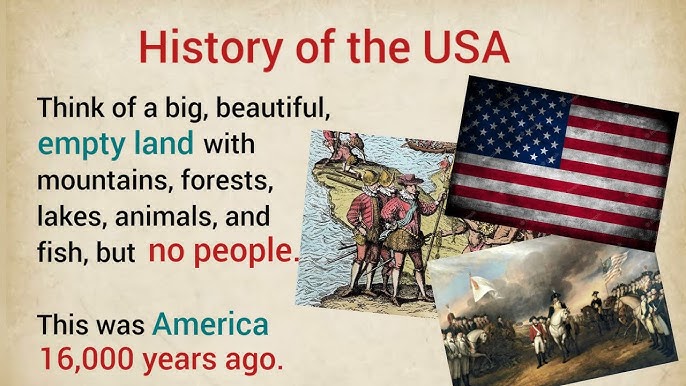The USA’ trajectory as a country has actually been shaped by individuals whose vision, resilience, and actions redefined societal standards, political systems, and cultural worths. From revolutionary leaders to supporters of equality, these numbers transcended their ages, leaving indelible marks on the material of American background. This observational analysis checks out the payments of pivotal characters, checking out how their heritages remain to influence modern discussion and progress.
George Washington: The Designer of American Democracy
As the initial Head of state of the United States, George Washington (1732– 1799) developed fundamental criteria for the incipient republic. His leadership throughout the Revolutionary Battle linked inconsonant swarms against British guideline, while his presidency emphasized public virtue over authoritarianism. Washington’s voluntary forfeiture of power after 2 terms set an important standard for democratic changes, a method later codified in the 22nd Amendment.
Abraham Lincoln (1809– 1865) led the U.S. with its most existential dilemma– the Civil War– while confronting the ethical mystery of slavery in a freedom. Lincoln’s Gettysburg Address redefined American nationhood as a cumulative commitment to equality, declaring the war a test of whether a government “of the individuals, by the individuals, for the individuals” might withstand.
The partnership of Susan B. Anthony (1820– 1906) and Elizabeth Cady Stanton (1815– 1902) militarized the women’s suffrage motion. With organizations like the National Lady Suffrage Association, they challenged legal and social obstacles to gender equal rights. Anthony’s activism, including her 1872 arrest for electing illegally, highlighted systemic disenfranchisement. Stanton’s “Statement of Beliefs” (1848) at Seneca Falls demanded ballot civil liberties, education and learning, and financial autonomy for females. Their unrelenting campaigning for laid the foundation for the 19th Amendment (1920 ), though their exclusion of women of shade reveals the movement’s complexities. Modern scholars stress their duty in stabilizing ladies’s political agency, in spite of the age’s restrictions.
Martin Luther King Jr.: Voice of the Civil Liberty Motion
Dr. Martin Luther King Jr. (1929– 1968) arised as the moral leader of the mid-20th-century Civil Civil liberties Activity, supporting nonviolent resistance to racial partition. His “I Have a Desire” speech (1963) throughout the March on Washington galvanized public assistance for the Civil Legal Right Act (1964) and Voting Civil Liberty Act (1965 ). His assassination emphasized the volatility of social progress, yet his philosophy of love and justice proceeds to inspire worldwide motions.
Franklin D. Roosevelt (1882– 1945) reshaped the federal government’s duty via his New Bargain plans, reacting to the Great Anxiety’s devastation. Programs like Social Safety, the Tennessee Valley Authority, and the Works Progression Administration provided relief while redefining economic security as a public responsibility. Roosevelt’s leadership during Globe War II, including the Lend-Lease Act, placed the U.S. as a global superpower.
Thomas Edison (1847– 1931) epitomized American resourcefulness, holding over 1,000 licenses for innovations like the electrical light bulb and phonograph. His Menlo Park research laboratory spearheaded collaborative industrial research study, accelerating technical commercialization. Edison’s electrification jobs, including New york city’s Pearl Street Terminal, transformed metropolitan life and productivity. While contemporaries like Nikola Tesla critiqued his service strategies, Edison’s work underpinned modern energy systems and home entertainment markets. His career illustrates both the transformative possibility of technology and the monopolistic tendencies of Gilded Age commercialism.

Harriet Tubman: Conductor of Freedom
Harriet Tubman (c. 1822– 1913), birthed into enslavement, left and ended up being a leading “conductor” on the Below ground Railroad, assisting over 70 individuals to freedom. Her tactical sparkle and expertise of hidden networks resisted the Fugitive Slave Act’s brutality. During the Civil Battle, Tubman acted as a Union spy and nurse, contributing to the Combahee River Raid that liberated 700 enslaved individuals. Later, she supported for women’s suffrage and established a home for elderly African Americans. Tubman’s life exhibits resistance and intersectional activism, challenging narratives of passivity in marginalized communities.
César Chávez: Labor Rights and Cultural Empowerment
César Chávez (1927– 1993) arranged farmworkers via the United Farm Workers (UFW), leveraging strikes and boycotts to protect far better salaries and problems. Chávez intertwined labor rights with social satisfaction, adopting the Aztec eagle as the UFW symbol and fasting to stress sacrifice. His efforts led to California’s Agricultural Labor Relations Act (1975 ), though debates proceed over his exemption of undocumented workers.
If you have any concerns with regards to exactly where and how to use scary facts about the World, you can make contact with us at our website. These figures, however diverse in era and objective, collectively emphasize the interplay of individual agency and systemic change. Their successes and drawbacks disclose the repetitive nature of progression– a pointer that societal innovation needs alertness, adjustment, and inclusivity.
Lincoln’s Gettysburg Address redefined American nationhood as a cumulative commitment to equal rights, stating the war an examination of whether a government “of the individuals, by the people, for the individuals” might withstand. Stanton’s “Affirmation of Sentiments” (1848) at Seneca Falls required voting civil liberties, education and learning, and economic freedom for women. Dr. Martin Luther King Jr. (1929– 1968) emerged as the moral leader of the mid-20th-century Civil Legal rights Activity, supporting nonviolent resistance to racial segregation. His “I Have a Desire” speech (1963) during the March on Washington galvanized public support for the Civil Legal Right Act (1964) and Ballot Rights Act (1965 ). Chávez intertwined labor civil liberties with social pride, taking on the Aztec eagle as the UFW sign and fasting to highlight sacrifice.